Complete Solutions to Level 2 Subjective of chapter LAWS OF THERMODYNAMICS of Class 11 book with complete answers and questions
| Class 11 | PHYSICS |
| Chapter | LAWS OF THERMODYNAMICS |
| DC PANDEY | Level 2 Subjective |
| Number Of Questions | 18 |
| Academic Year | 2023-24 |
Two moles of helium gas undergo a cyclic process as shown in Fig. Assuming the gas to be ideal, calculate the following quantities in this process
(a) The net change in the heat energy
(b) The net work done
(c) The net change in internal energy
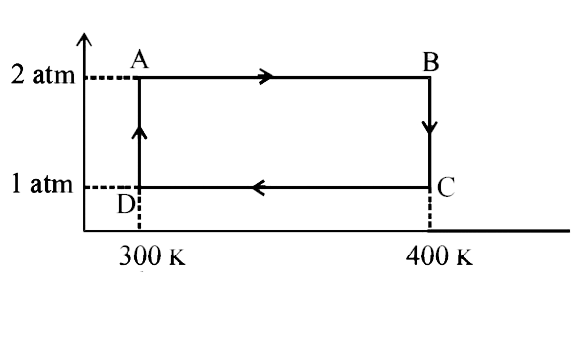
View Solution1.0 k-mol of a sample of helium gas is put through the cycle of operations shown in figure. BC is an isothermal process and `p_A=1.00 atm`, `V_A=22.4m^3`, `p_B=2.00atm`. What are `T_A`, `T_B` and `V_C`?
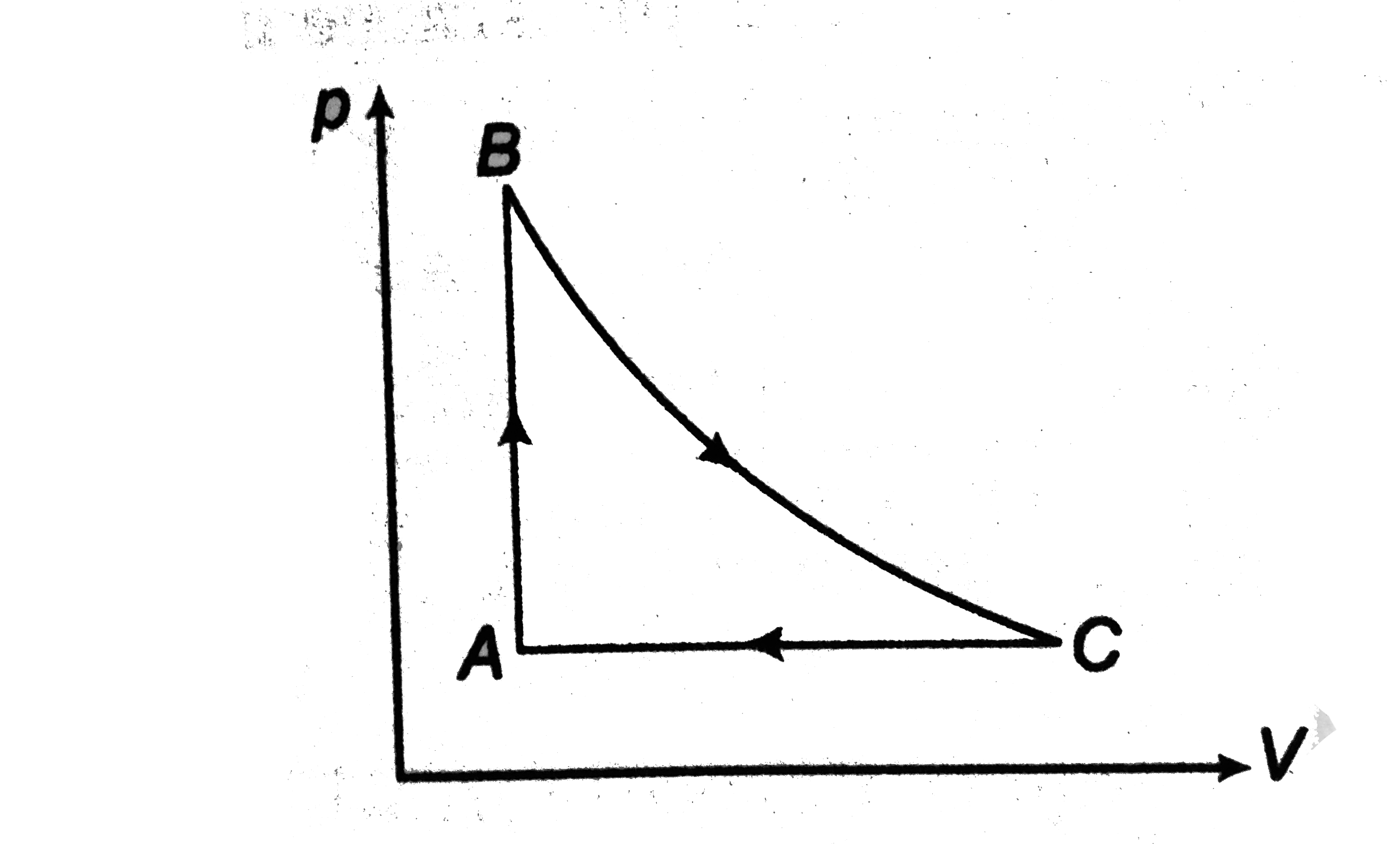
View SolutionThe density `(rho)` versus pressure (p) graph of one mole of an ideal monoatomic gas undergoing a cyclic process is shown in figure. Molecular mass of gas is M.
(a) Find work done in each process.
(b) Find heat rejected by gas in one complete cycle.
(c) Find the efficiency of the cycle.
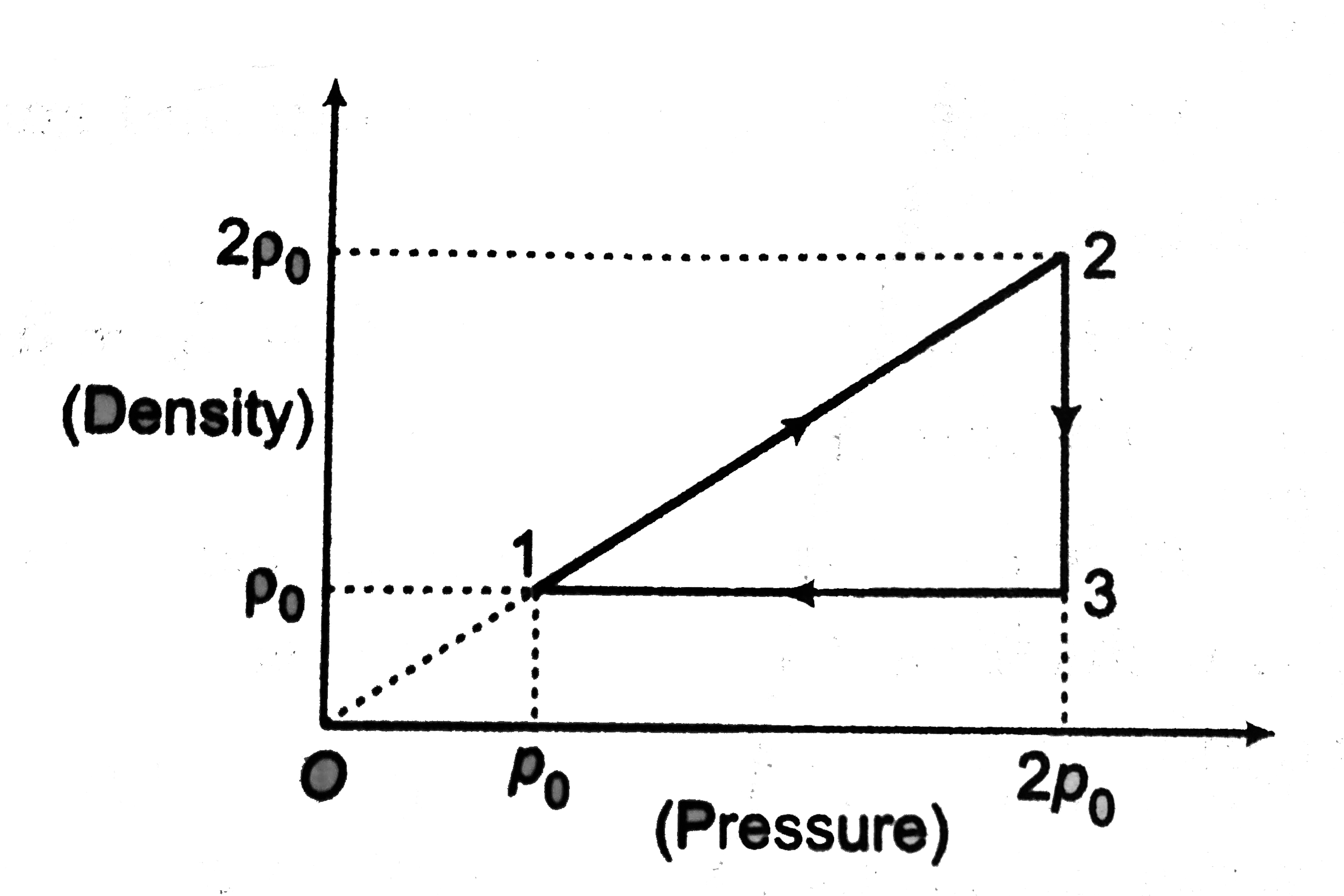
View SolutionAn ideal gas goes through the cycle abc. For the complete cycle 800J of heat flows out of the gas. Process ab is at constant pressure and process bc is at constant volume. In process c-a, `ppropV`. States a and b have temperature `T_a=200K` and `T_b=300K`. (a) Sketch the p-V diagram for the cycle. (b) What is the work done by the gas for the process ca?
View SolutionA cylinder of ideal gas is closed by an 8kg movable piston of area `60cm^2`. The atmospheric pressure is 100kPa. When the gas is heated form `30^@C` to `100^@C`, the piston rises 20 cm. The piston is then fastened in the place and the gas is cooled back to `30^@C`. If `DeltaQ_1` is the heat added to the gas during heating and `DeltaQ_2` is the heat lost during cooling, find the difference.
View SolutionThree moles of an ideal gas `(C_p=7/2R)` at pressure `p_0` and temperature `T_0` is isothermally expanded to twice its initial volume. It is then compressed at a constant pressure to its original volume.
(a) Sketch p-V and p-T diagram for complete process.
(b) Calculate net work done by the gas.
(c) Calculate net heat supplied to the gas during complete process.
(Write your answer in terms of gas constant =R)
View SolutionTwo moles of helium gas`(lambda=5//3)` are initially at temperature `27^@C` and occupy a volume of 20 litres. The gas is first expanded at constant pressure until the volume is doubled. Then it undergoes an adiabatic change until the temperature returns to its initial value.
(i) Sketch the process on a p-V diagram.
(ii) What are the final volume and pressure of the gas?
(iii) What is the work done by the gas ?
View SolutionAn ideal monoatomic gas is confined in a cylinder by a spring-loaded piston of cross-section `8.0xx10^-3m^2`. Initially the gas is at 300K and occupies a volume of `2.4xx10^-3m^3` and the spring is in its relaxed (unstretched, unompressed) state, fig. The gas is heated by a small electric heater until the piston moves out slowly by 0.1m. Calculate the final temperature of the gas and the heat supplied (in joules) by the heater. The force constant of the spring is `8000 N//m`, atmospheric pressure is `1.0xx10^5 Nm^-2`. The cylinder and the piston are thermally insulated. The piston is massless and there is no friction between the piston and the cylinder. Neglect heat loss through lead wires of the heater. The heat capacity of the heater coil is negligible. Assume the spring to be massless.
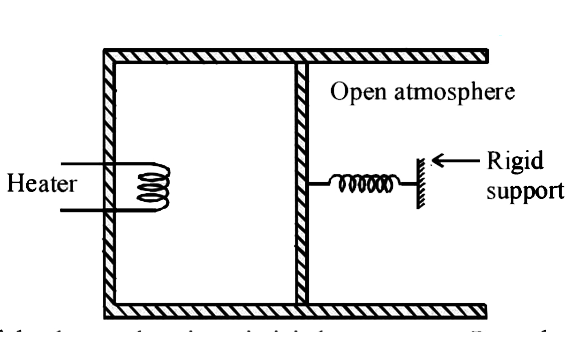
View SolutionAn ideal diatomic gas `(gamma=7/5)` undergoes a process in which its internal energy relates to the volume as `U=alphasqrtV`, where `alpha` is a constant.
(a) Find the work performed by the gas to increase its internal energy by 100J.
(b) Find the molar specific heat of the gas.
View SolutionFor an ideal gas the molar heat capacity varies as `C=C_V+3aT^2`. Find the equation of the process in the variables (T,V) where a is a constant.
View SolutionOne mole of an ideal monatomic gas undergoes the process `p=alphaT^(1//2)`, where `alpha` is a constant.
(a) Find the work done by the gas if its temperature increases by 50K.
(b) Also, find the molar specific heat of the gas.
View SolutionOne mole of a gas is put under a weightless piston of a vertical cylinder at temperature T. The space over the piston opens into atmosphere. Initially, piston was in equilibrium. How much work should be performed by some external force to increase isothermally the volume under the piston to twice the volume? (Neglect friction of piston).
View SolutionAn ideal monatomic gas undergoes a process where its pressure is inversely proportional to its temperature.
(a) Calculate the molar specific heat of the process.
(b) Find the work done by two moles of gas if the temperature change from `T_1` to `T_2`.
View SolutionThe volume of one mode of an ideal gas with adiabatic exponent `gamma` is varied according to the law `V = a//T`, where a is constant . Find the amount of heat obtained by the gas in this process, if the temperature is increased by `Delta T`.
View SolutionTwo moles of a monatomic ideal gas undergo a cyclic process ABCDA as shown in figure. BCD is a semicircle. Find the efficiency of the cycle.
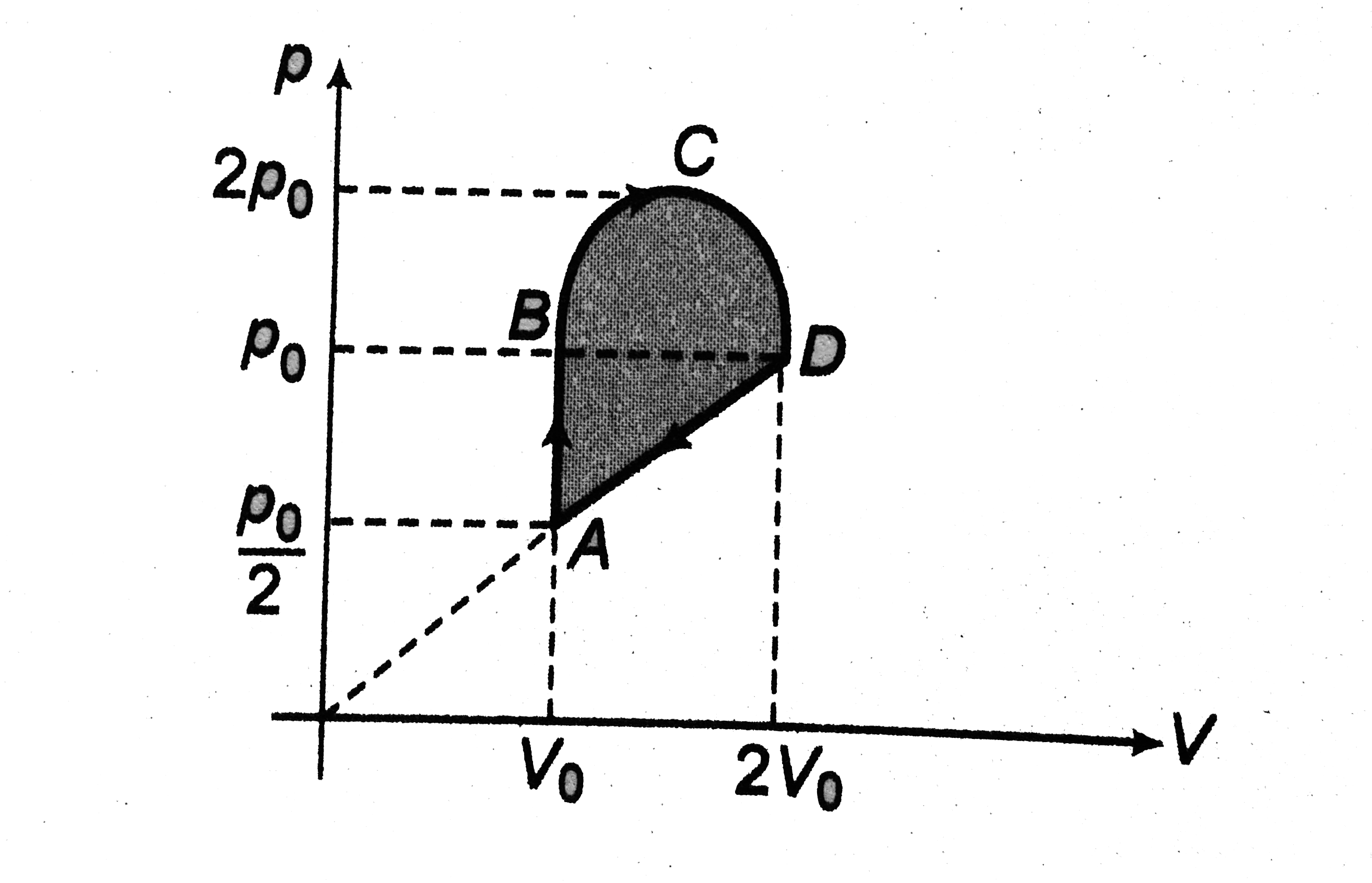
View SolutionPressure p, volume V and temperature T for a certain gas are related by
`p=(alphaT-betaT^2)/(V)`
where, `alpha` and `beta` are constants. Find the work done by the gas if the temperature changes from `T_1` to `T_2` while the pressure remains the constant.
View SolutionAn ideal gas has a specific heat at constant pressure `C_p=(5R)/(2)`. The gas is kept in a closed vessel of volume `V_0` at temperature `T_0` and pressure `p_0`. An amount fo `10p_0V_0` of heat is supplied to the gas.
(a) Calculate the final pressure and temperature of the gas.
(b) Show the process on p-V diagram.
View SolutionThree moles of an ideal gas being initially at a temperature `T_i=273K` were isothermally expanded 5 times its initial volume and then isochorically heated so that the pressure in the final state becomes equal to that in the initial state. The total heat supplied in the process is 80kJ. Find `gamma(=(C_p)/(C_V))` of the gas.
View Solution
Level 2 Subjective questions and complete solutions for chapter LAWS OF THERMODYNAMICS of DC PANDEY ENGLISH of Class 11
All Exercises from DC PANDEY Class 11 PHYSICS LAWS OF THERMODYNAMICS
- Example
- Example Type 1
- Example Type 2
- Example Type 3
- Exercise 21.1
- Exercise 21.2
- Exercise 21.3
- Exercise 21.4
- Level 1 Assertion And Reason
- Level 1 Objective
- Level 1 Objective Questions
- Level 1 Subjective
- Level 2 More Than One Correct
- Level 2 Passage I
- Level 2 Passage II
- Level 2 Single Correct
- Level 2 Subjective
- Miscellaneous Example